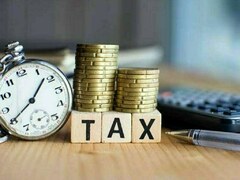NEW YORK: Wall Street slid into the finish line of a dismal month and quarter on Thursday as a continued sell-off put a grim punctuation mark at the close of the S&P 500’s worst first-half in more than half a century.
All three major US stock indexes were down but off session lows on the last day of the month and the second quarter, putting the S&P 500 on course for its steepest first-half percentage drop since 1970.
The Nasdaq was on its way to its worst-ever first-half performance, while the Dow appeared on track for its biggest January-June percentage drop since 1962. All three indexes were bound to post their second straight quarterly declines. That last time that happened was in 2015 for the S&P and the Dow, and 2016 for the Nasdaq.
The year began with spiking cases of COVID-19 due to the Omicron variant. Then came Russia’s invasion of Ukraine, decades-high inflation and aggressive interest rate hikes from the Federal Reserve, which have stoked fears of a possible recession.
“The reality is that we will very likely end up in a mild recession,” said Oliver Pursche, senior vice president at Wealthspire Advisors, in New York. “From an investor’s perspective, it’s important to remember that sell-offs happen well ahead of recession and markets have a history of rising during shallow recessions.”
Economic data released on Thursday did little to allay those fears. Disposable income inched lower, consumer spending decelerated, inflation remained hot and jobless claims inched higher. “We’ve started to see a slowdown in consumer spending,” Pursche added. “And it seems that inflation is taking its toll on the average consumer and that translates to corporate earnings which is what ultimately drives the stock market.”
Sharp rate hike bets keep Wall Street subdued, Goldman lifts Dow
The graphic below shows year-on-year growth of core inflation indicators, all of which suggest that while a peak appears to have been reached in March, they all continue to soar well above the Fed’s average annual 2% target:
The Dow Jones Industrial Average fell 107.49 points, or 0.35%, to 30,921.82, the S&P 500 lost 7.79 points, or 0.20%, to 3,811.04 and the Nasdaq Composite dropped 50.13 points, or 0.45%, to 11,127.76. Of the 11 major sector of the S&P 500, utilities were up the most, with energy suffering the largest percentage drop. Even so, energy is the sole sector to show a year-to-date gain, aided by crude prices spiking over supply concerns due to Russia-Ukraine conflict.
The major stock indexes are on track to show monthly losses, with the S&P 500 set for its worst June since the Financial Crisis. Second-quarter reporting season begins in several weeks, and 130 of the companies in the S&P 500 have pre-announced. Of those, 45 have been positive and 77 have been negative, resulting in a negative/positive ratio of 1.7 stronger than the first quarter but weaker than a year ago, according to Refinitiv data.
Copyright Business Recorder, 2022
























Comments
Comments are closed.